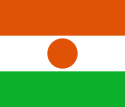Organizacja Współpracy Islamskiej
 | |
| Język roboczy | |
|---|---|
| Siedziba | |
| Członkowie | 57 |
| sekretarz generalny | Yousef Al-Othaimeen |
| Utworzenie | |
Organizacja Współpracy Islamskiej – międzynarodowa organizacja polityczno-religijna. Ma stałego przedstawiciela przy ONZ.
Formalnie powstała w 1971 roku jako Organizacja Konferencji Islamskiej (OKI), chociaż de facto istniała już od konferencji w Rabacie w 1969 roku. W czerwcu 2011 roku OKI zmieniła nazwę na obecną tj. Organizacja Współpracy Islamskiej (OWI)[1].
Celem organizacji jest zacieśnianie współpracy gospodarczej, kulturalnej i naukowej państw muzułmańskich. W ramach OWI działa wiele wyspecjalizowanych instytucji, m.in. Muzułmański Fundusz Solidarności i Islamski Bank Rozwoju.
Sekretarze generalni
- Tunku Abdul Rahman (Malezja): 1971–1973
- Hassan Al-Touhami (Egipt): 1974–1975
- Amadou Karim Gaye (Senegal): 1975–1979
- Habib Chatty (Tunezja): 1979–1984
- Syed Sharifuddin Pirzada (Pakistan): 1985–1988
- Hamid Algabid (Niger): 1989–1996
- Azzedine Laraki (Maroko): 1997–2000
- Abdelouahed Belkeziz (Maroko): 2001–2004
- Ekmeleddin İhsanoğlu (Turcja): 2004–2014
- Iyad bin Amin Madani (Arabia Saudyjska): od 31 stycznia 2014 do 2016
- Yousef Al-Othaimeen (Arabia Saudyjska): od 2016[2]
Członkowie
Konferencje
| Numer | Data | Państwo | Miejsce |
|---|---|---|---|
| 1 | 22 września – 25 września 1969 | Rabat | |
| 2 | 22 lutego – 24 lutego 1974 | Lahaur | |
| 3 | 25 stycznia – 29 stycznia 1981 | Mekka i Taif | |
| 4 | 16 stycznia – 19 stycznia 1984 | Casablanca | |
| 5 | 26 stycznia – 29 stycznia 1987 | Kuwejt | |
| 6 | 9 grudnia – 11 grudnia 1991 | Dakar | |
| 7 | 13 grudnia – 15 grudnia 1994 | Casablanca | |
| 1. Nadzwyczajny | 23 marca 1997 | Islamabad | |
| 8 | 9 grudnia – 11 grudnia 1997 | Teheran | |
| 9 | 12 listopada – 13 listopada 2000 | Doha | |
| 2. Nadzwyczajny | 5 marca 2003 | Doha | |
| 10 | 16 października – 17 października 2003 | Putrajaya | |
| 3. Nadzwyczajny | 7 grudnia – 8 grudnia 2005 | Mekka | |
| 11 | 13 marca – 14 marca 2008 | Dakar | |
| 4. Nadzwyczajny | 14 sierpnia – 15 sierpnia 2012 | Mekka | |
| 5. Nadzwyczajny | 13 grudnia 2017 | Stambuł |
Przypisy
- ↑ Organizacja Konferencji Islamskiej zmienia nazwę. [dostęp 2012-02-07].
- ↑ Biography. oic-oci.org, 2016. [dostęp 2016].zły zapis daty dostępu
- ↑ Zawieszono członkostwo Syrii w Organizacji Współpracy Islamskiej. wp.pl, 2012-08-14. [dostęp 2012-08-14]. [zarchiwizowane z tego adresu (2014-07-25)].
Media użyte na tej stronie
bendera Indonesia
Flag of Mauritania, adopted in 2017. The National Assembly added red stripes to the top and bottom edges to represent “the blood shed by the martyrs of independence”.
Please do not replace the simplified code by a version created with Inkscape or another vector graphics editor❗
Flag of Senegal
Łatwo można dodać ramkę naokoło tej grafiki
Flag of Maldives. The colours used are Pantone 186 C for red and Pantone 348 C for green.
Flag of Albania
Flag of the Ivory Coast, written by Jon Harald Søby, modified by Zscout370. The colors match to what is reported at http://fotw.vexillum.com/flags/ci.html.
The proportions of this flag are 3:2; however, there is no official definition for the correct proportions and also 5:3 is widely used.
The national flag of Kingdom of Thailand since September 2017; there are total of 3 colours:
- Red represents the blood spilt to protect Thailand’s independence and often more simply described as representing the nation.
- White represents the religion of Buddhism, the predominant religion of the nation
- Blue represents the monarchy of the nation, which is recognised as the centre of Thai hearts.
The Flag of India. The colours are saffron, white and green. The navy blue wheel in the center of the flag has a diameter approximately the width of the white band and is called Ashoka's Dharma Chakra, with 24 spokes (after Ashoka, the Great). Each spoke depicts one hour of the day, portraying the prevalence of righteousness all 24 hours of it.
Map of nations in Organization of the Islamic Conference

































































